Discover the China Border Crawl Loop: Cao Bang to Ma Phuc Pass
Embarking on the China Border Crawl Loop is like stepping into a hidden world of rugged landscapes and cultural gems that span northern Vietnam’s untouched borders. The journey from Cao Bang to Bao Lac, through Pac Bo Cave and Ma Phuc Pass, offers an unforgettable blend of adventure and serenity. Let MOTOGO Tours explore the thrilling loop.

What is the China Border Crawl Loop?
The China Border Crawl Loop is a captivating travel circuit in northern Vietnam that connects some of the most stunning and culturally significant sites along the border. This loop includes the breathtaking province of Cao Bang, the quaint town of Bao Lac, the historically important Pac Bo Cave, and the scenic Ma Phuc Pass. It’s a route designed for those who crave an authentic travel experience.
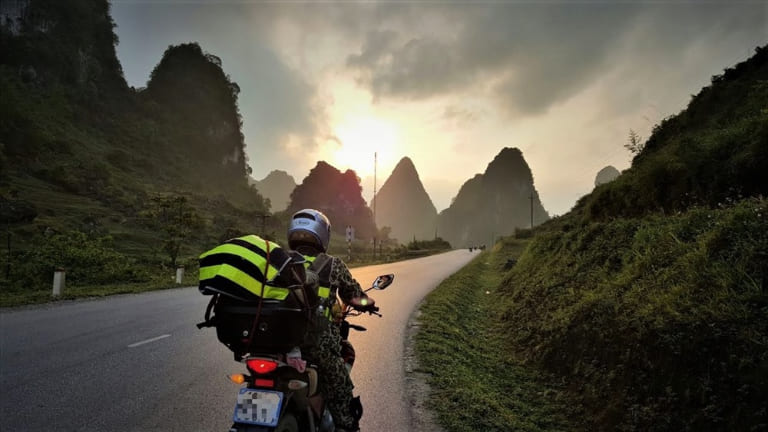
Why Explore the Border Crawl Loop?
The China Border Crawl Loop isn’t your typical tourist route. It’s an adventure that offers the thrill of discovering hidden places and understanding Vietnam’s cultural and historical heritage. The back roads that connect these destinations are perfect for travelers who seek a mix of tranquility and excitement while engaging with nature and local traditions.
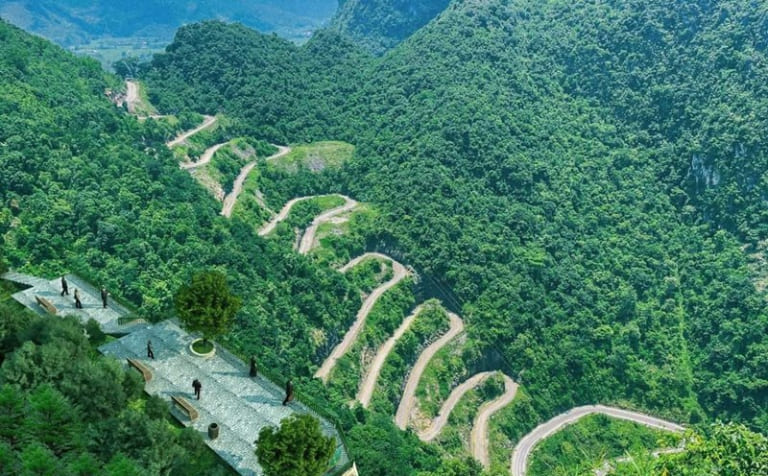
Experience the Thrill of China Border Crawl Loop Travel
Motorcyclists and adventure lovers will find the China Border Crawl Loop to be an amazing trip. This loop skirts the Chinese border, winds across mountain routes, and goes through sites of great cultural and historical value. The loop offers a raw and real sense of adventure with steep climbs, vertigo-inducing descends, and panoramic vistas of the rocky terrain.
Information:
- Route: Cao Bang→Bao Lac→Pac Bo Cave→Tra Linh Road→ Ma Phuc Pass via border back roads
- Distance: 285km
- Time: 2-3 days
- Scenery: mountains, incredible passes, remote borders, rivers, villages, historic sites
Setting Off from Cao Bang: The Start of the Adventure
The voyage starts in the little but vibrant city of Cao Bang, in northern Vietnam. As the gateway to some of the most isolated regions along the Chinese border, Cao Bang has long served as a launch point for exploring the area’s natural and historical wonders.
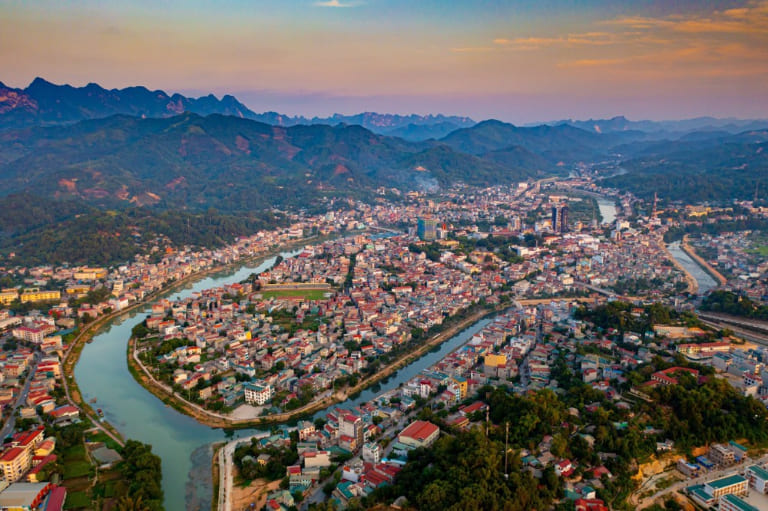
Heading west from the city, the road soon transforms into QL34, an intricate ribbon of tarmac that climbs high into the mountains, meandering through terraced rice fields and thick forests. The cool mountain air and views of endless green valleys set the tone for what’s to come: a journey full of twists, turns, and surprises.
Riders will quickly notice how the road demands complete attention. With each bend revealing a new facet of the landscape, from rice paddies cascading down hillsides like emerald staircases to distant peaks shrouded in mist. As the road unfurls towards Bao Lac, it offers a chance to experience Vietnam’s untouched natural beauty and traditional way of life.
Bao Lac: A Rest Stop Among Rivers and Mountains
Situated at the meeting of rivers, the hamlet of Bao Lac provides a nice break following the arduous ride along QL34. Though tiny, Bao Lac offers all the conveniences of a break—drinks, simple lodging, and a taste of regional cuisine.
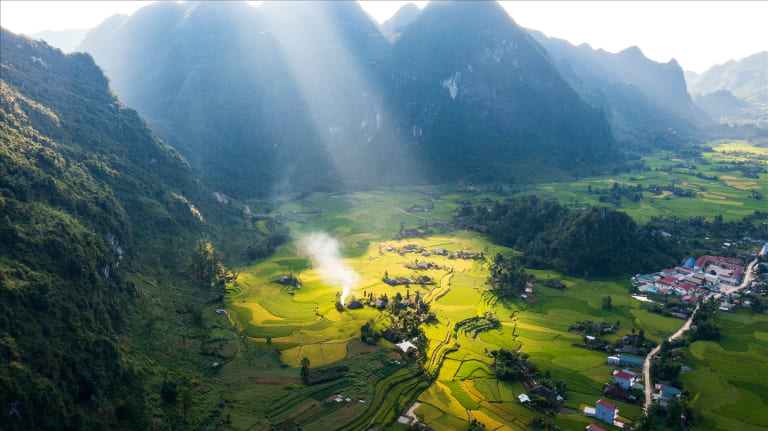
This town is a window into the culture of the northern mountain ethnic minority, not only a stop-over. Among the various indigenous groups living in the area are the Hmong, Tay, and Dao whose distinctive rituals and vibrant traditional clothing accentuate the beauty of the land.
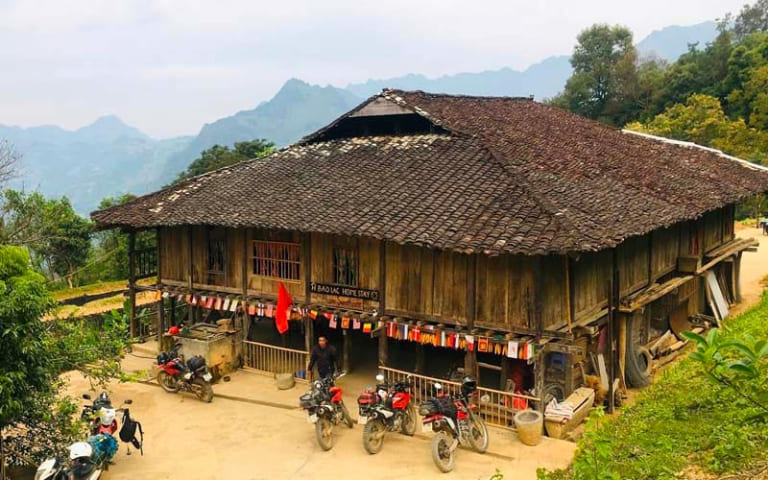
Spending a night in Bao Lac allows guests to relax and get ready for the following stage of the trip. It’s also a chance to visit the markets in the town, try local cuisine, or just savor the peace of an area where life proceeds at a slower speed.
The Legendary Road East: A Dance with the Dragon
The route changes in both terms of terrain and landscape as you depart Bao Lac and go east following the Gam River. This route, still unnamed on many maps, has quickly gained a reputation among motorcyclists as one of Vietnam’s most extraordinary rides.
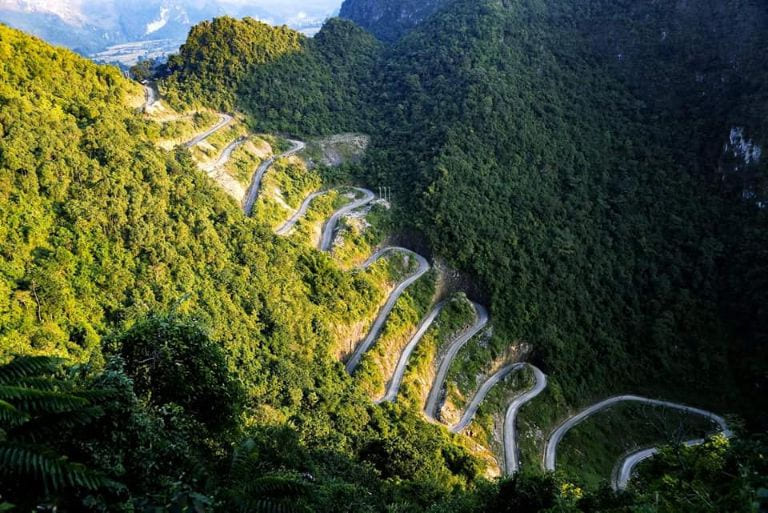
Hugging the border with China for much of its length, the narrow asphalt path twists and turns like a living serpent, navigating some of the most rugged terrain in the country. The road’s contorted shape has earned it the nickname “Dragon’s Stairway,” due to its resemblance to a dragon thrashing violently as it tries to shake off an attacker.

The Dragon’s Stairway includes a series of consecutive switchbacks that ascend nearly vertical rock walls, requiring skill and focus from riders as they navigate hairpin turns and steep climbs. Still, the work is more than worth it; the summit vistas are amazing, with the road apparently hanging in the air surrounded by verdant valleys and pure rock cliffs.
>>> Let’s see more: Discover the Ban Gioc Waterfall Loop: A Guide to Cao Bang
Reaching Pac Bo Cave: A Journey Through History
Following the Dragon’s Stairway’s twists and turns, the path veers east toward Pac Bo Cave, a place of great historical importance. Ho Chi Minh, the legendary revolutionary leader of Vietnam, came back to the nation in 1941 following thirty years of exile to start his fight for independence.
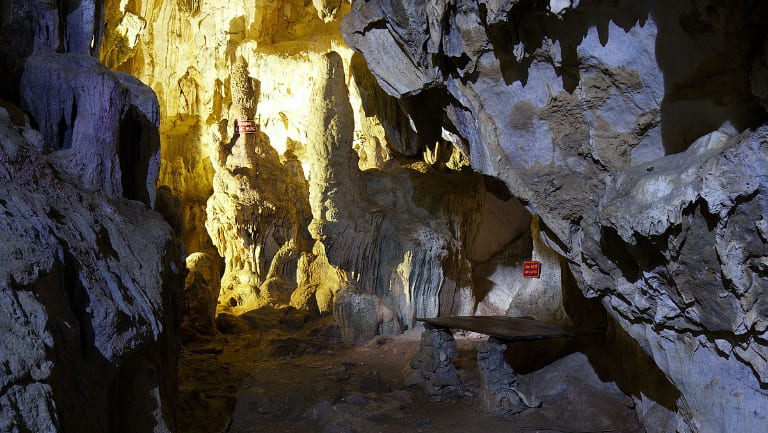
Visiting Pac Bo Cave and the surrounding area helps one to have a better knowledge of Vietnam’s past and pays tribute to the struggle of the nation for freedom. The Cave is more than simply a historical site; it’s also a very picturesque location where glistening clean streams wind through a rich valley surrounded by tall limestone cliffs.
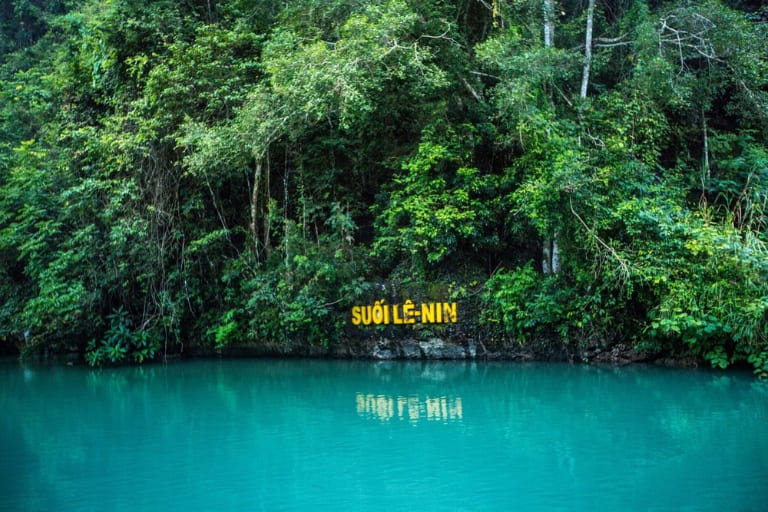
The region radiates peace, thus it’s perfect to stop and consider before carrying on the trip. A little trip to the cave and the adjacent Lenin Stream, named by Ho Chi Minh himself, gives those interested in history a significant depth to the adventure.
The Back Roads to Tra Linh
Starting at Pac Bo, the loop veers onto DT210, a less-known back road that hugs the border with China and rises rapidly over limestone cliffs. This portion of the road passes across a terrain mostly covered in soaring karsts. Often hugging the brink of the cliff, the small and meandering route offers exhilarating views and an unvarnished window into rural Vietnam.
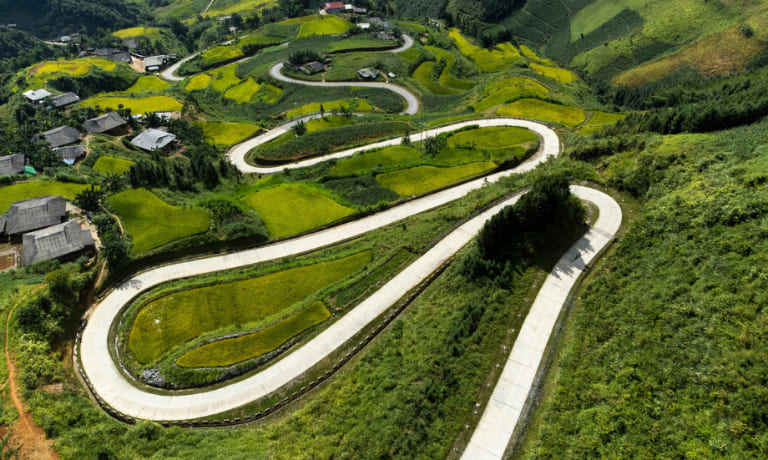
Along this section of the road, the villages seem to have not changed with time; typical mud-and-straw homes with red- tile roofs cluster around fields of rice, corn, and soybeans. Here life is modest and centered on farming; oxen and water buffalo are still utilized for plowing fields and commodities transportation.
Thang Hen Lake: A Hidden Gem Along the Route
Although on route to Tra Linh, a quick stop to Thang Hen Lake is something to give thought. This hidden gem is a stunning natural lake set amidst the limestone mountains, known for its changing water levels and crystal-clear waters.
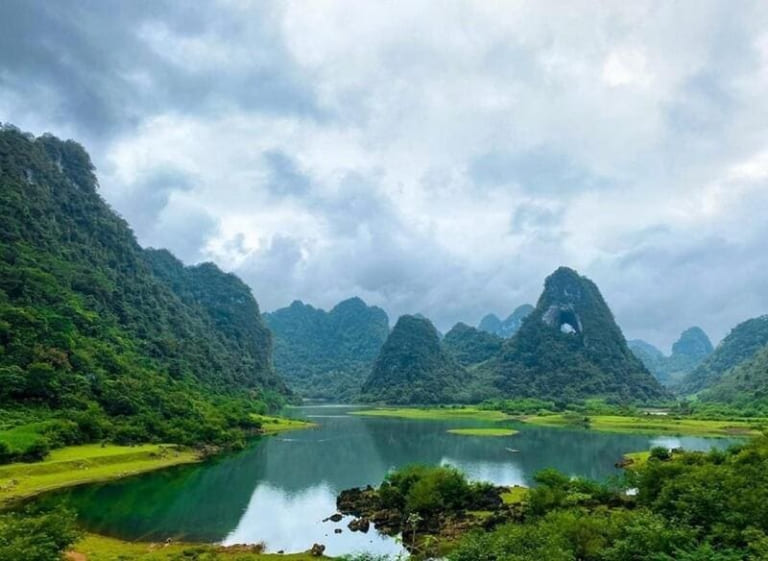
The surrounding karst mountains highlight the lake’s beauty, which makes it ideal taking pictures or just savoring the peace of mind. The landscape here reminds one of the immaculate natural surroundings typical of most northern Vietnam.
The Final Stretch: Ma Phuc Pass and the Return to Cao Bang
After leaving Tra Linh and heading south on DT205 toward the Ma Phuc Pass, finally reuniting with QL3, the last phase of the trip starts. Another highlight of the China Border Crawl Loop, the Ma Phuc Pass provides a spectacular end to the journey. Views of a gorge bordered with limestone cliffs open out around every turn in the route. It’s a fitting ending for a trip marked by breathtaking landscapes and difficult roadways.
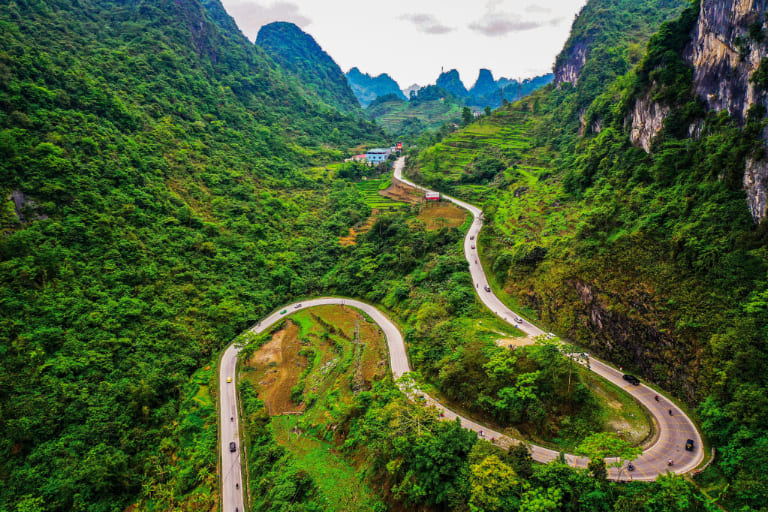
As the loop comes full circle back to Cao Bang, there is a sense of accomplishment that accompanies the end of such a journey. The China Border Crawl Loop isn’t just about traversing mountains and valleys; it’s about immersing oneself in a landscape that feels ancient and experiencing the culture of the people who live there, and reflecting on the history embedded in the very soil of the region.
Practical Tips for Riding the China Border Crawl Loop
- Timing and Weather: From October to April, the dry season—where the temperature is milder and road conditions are more consistent—is the ideal time to cycle the circle. Summer brings lots of rain, hence some areas can be more difficult.
- Accommodation and Fuel: Although one may finish the loop in one day, distributing the trip across two days lets one enjoy the trip more leisurely. Bao Lac has minimal choices for lodging. In Cao Bang and Bao Lac, get ready as, in the most isolated places, fuel stations are few.
- Road Conditions: Get ready for a mixed bag of surfaces. While some areas could be gravelly or potholed, others are smooth asphalt. We advise a motorcycle with good suspension.
- Etiquette from Culture: Respect regional customs, particularly with regard to village passing through. Before photographing individuals, always get permission; also, be aware of the peaceful and conventional way of life.
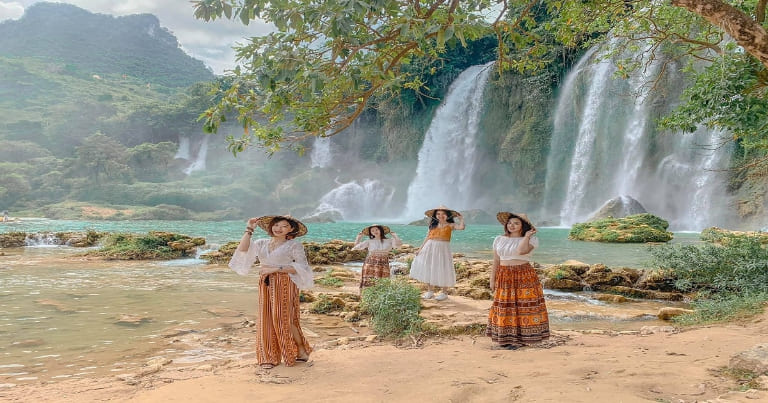
Apart from a motorbike tour, the China Border Crawl Loop offers a chance to discover the borderlands with China, visit some of the most isolated and breathtaking scenery in Vietnam, and savor the pure excitement of adventure. For those who brave to ride the loop, it promises an amazing experience with its mix of breathtaking surroundings and demanding routes.
Related Posts:
- Beautiful Routes in Northern Vietnam: Discover Scenic Journeys and Culture
- Ba Be Lake Loop: Must-See Stops and Travel Tips for First-Timers
- Discover the Most Beautiful Motorbike Routes in Hanoi
- The Ha Giang – Cao Bang Route: Northern Vietnam’s Ultimate Adventure
- Sapa – Ha Giang Route Travel Guide: Discover Vietnam’s Scenic Northeast








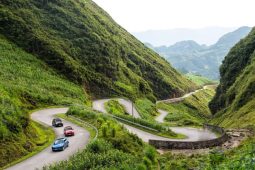


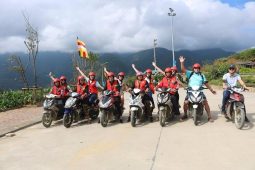
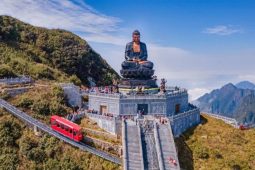
Be the first to comment!